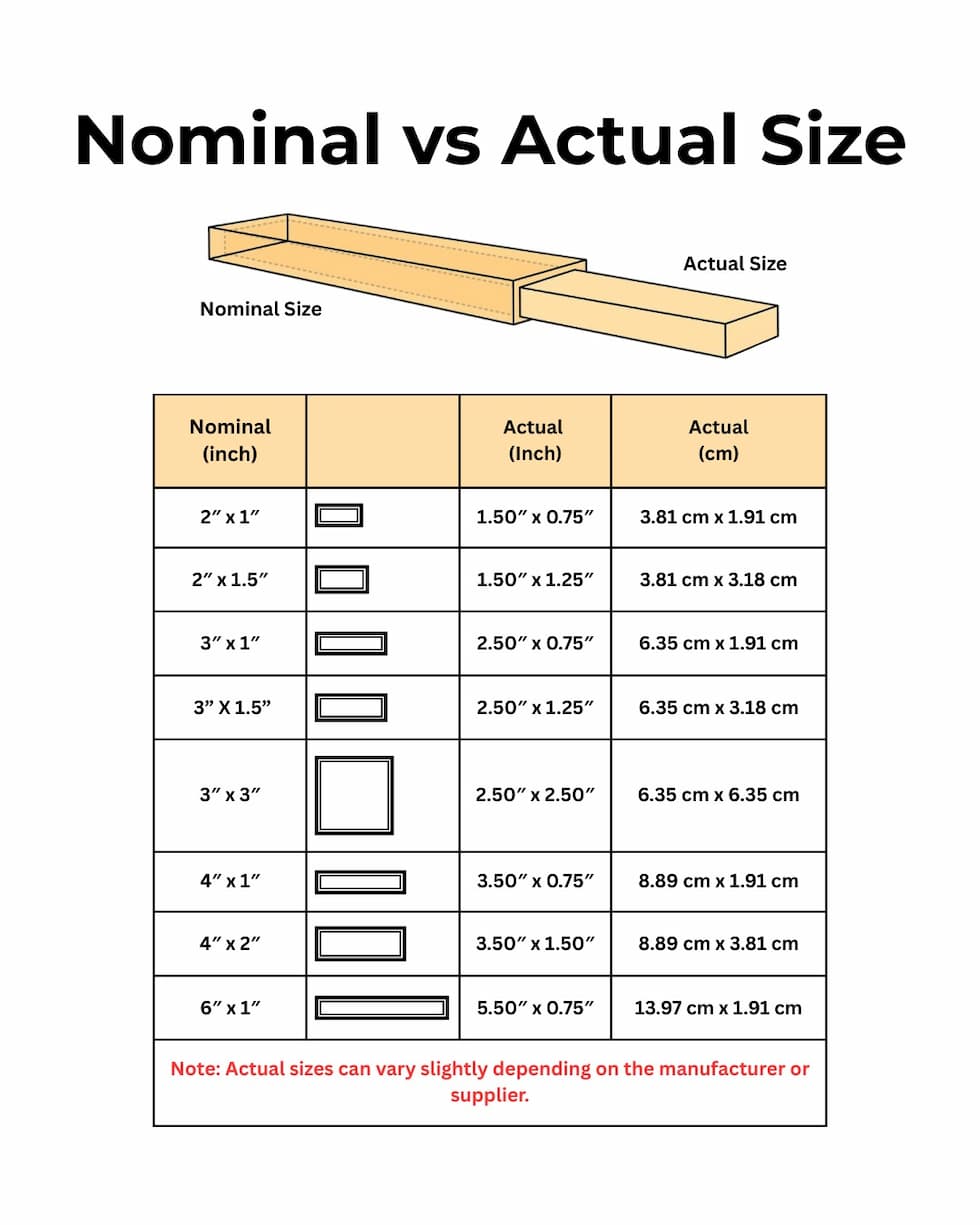When buying timber for your next project, have you ever noticed that a piece labeled “2″ x 1″” doesn’t actually measure 2 inches by 1 inch? This isn’t a mistake — it’s how the timber industry works. To help you avoid surprises and miscalculations, let’s dive into the difference between nominal and actual timber sizes.

What is a Nominal Size?
The nominal size refers to the timber’s dimensions before it is dried, planed, or finished. It’s the rough-sawn size that the timber measures straight from the sawmill.
Think of it as the timber’s “name” size rather than its true size. For example:
- A timber labeled 2″ x 1″ is cut to those dimensions initially.
- After processing (drying and planing), it becomes smaller.
What is the Actual Size?
The actual size is the final, usable dimension of the timber after all processing is complete.
Here’s how some common nominal sizes translate into actual sizes:
| Nominal Size (in) | Actual Size (in) | Actual Size (cm) |
| 2″ x 1″ | 1.50″ x 0.75″ | 3.81 cm x 1.91 cm |
| 2″ x 1.5″ | 1.50″ x 1.25″ | 3.81 cm x 3.18 cm |
| 3″ x 1″ | 2.50″ x 0.75″ | 6.35 cm x 1.91 cm |
| 3″ x 1.5″ | 2.50″ x 1.25″ | 6.35 cm x 3.18 cm |
| 3″ x 3″ | 2.50″ x 2.50″ | 6.35 cm x 6.35 cm |
| 4″ x 1″ | 3.50″ x 0.75″ | 8.89 cm x 1.91 cm |
| 4″ x 2″ | 3.50″ x 1.50″ | 8.89 cm x 3.81 cm |
| 6″ x 1″ | 5.50″ x 0.75″ | 13.97 cm x 1.91 cm |
Note: Slight variations can occur depending on the timber species, mill, and regional standards.
Why It Matters
Understanding the difference between nominal and actual sizes can save you from:
- Measurement mistakes
- Tight fitting issues
- Buying the wrong amount of timber
If you’re building furniture, shelves, or anything that needs precision, always measure the actual timber before cutting or assembling.
Pro Tip
Whether you’re using kapur, meranti, or other hardwoods, always confirm with your supplier whether the dimensions listed are nominal or actual. This is especially important for online purchases.
In Summary
| Term | Meaning |
| Nominal Size | The named size before processing (e.g. 2″ x 1″) |
| Actual Size | The true size after drying and planing (e.g. 1.5″ x 0.75″) |
By understanding timber sizing, you’ll make smarter purchasing decisions, avoid costly mistakes, and build more accurate, better-fitting projects.
Need help choosing the right size for your next project? Get in touch with us on WhatsApp.

